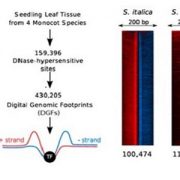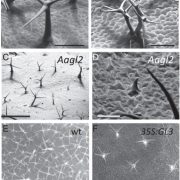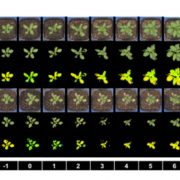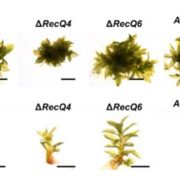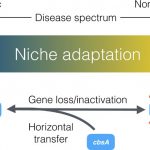Leaf angle control across the sorghum canopy (Plant Physiol.)
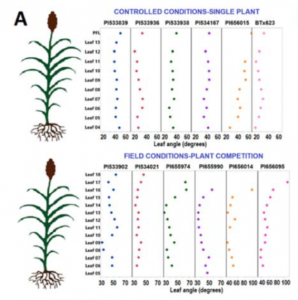 In a rosette-forming plant like Arabidopsis, leaf radial angle is optimized to prevent self-shielding. By contrast, in a plant such as sorghum, leaf vertical angle affects self-shading. A “smart canopy” model has been proposed in which upper leaves have a more upright orientation to allow more light to reach the lower leaves. Mantilla-Perez looked at leaf angles in six sorghum accessions in control and field conditions. None showed the “smart canopy” arrangement of leaf angles. They next looked at the genetic architecture of leaf angle, using plant width as a proxy. They identified several regions associated with width variation, some of which affected multiple leaf levels and other affecting only a few. Genes involved in brassinosteroid or auxin signaling (BZR1/BES1 and Dw3) affected leaves at all levels but with variable effects, which could be due to variations in expression level. They found that the BZR1/BES1 expression gradient together with Dw3, partly explains the observed leaf angle distribution across the plant in all genetic backgrounds. This finding provides a foundation for improving sorghum light interception, and therefore productivity. (Summary by Mary Williams @PlantTeaching) Plant Physiol. 10.1104/pp.20.00632
In a rosette-forming plant like Arabidopsis, leaf radial angle is optimized to prevent self-shielding. By contrast, in a plant such as sorghum, leaf vertical angle affects self-shading. A “smart canopy” model has been proposed in which upper leaves have a more upright orientation to allow more light to reach the lower leaves. Mantilla-Perez looked at leaf angles in six sorghum accessions in control and field conditions. None showed the “smart canopy” arrangement of leaf angles. They next looked at the genetic architecture of leaf angle, using plant width as a proxy. They identified several regions associated with width variation, some of which affected multiple leaf levels and other affecting only a few. Genes involved in brassinosteroid or auxin signaling (BZR1/BES1 and Dw3) affected leaves at all levels but with variable effects, which could be due to variations in expression level. They found that the BZR1/BES1 expression gradient together with Dw3, partly explains the observed leaf angle distribution across the plant in all genetic backgrounds. This finding provides a foundation for improving sorghum light interception, and therefore productivity. (Summary by Mary Williams @PlantTeaching) Plant Physiol. 10.1104/pp.20.00632


